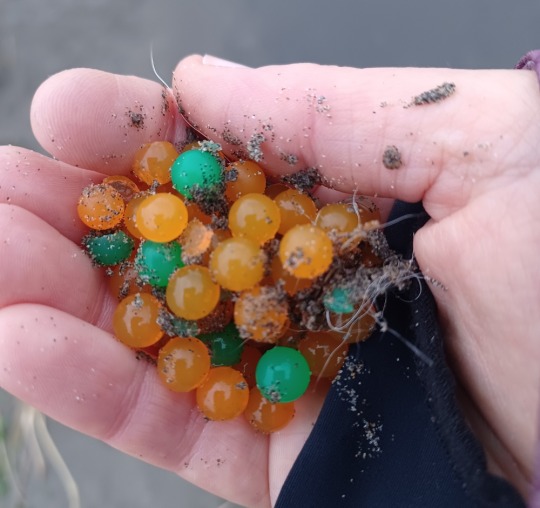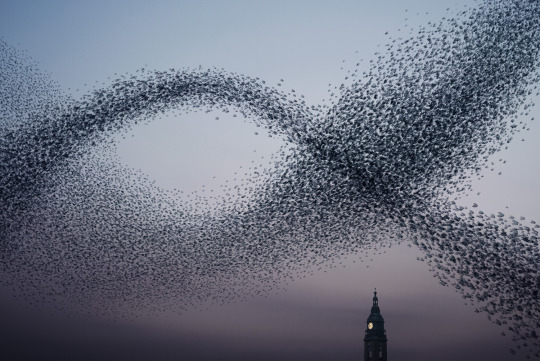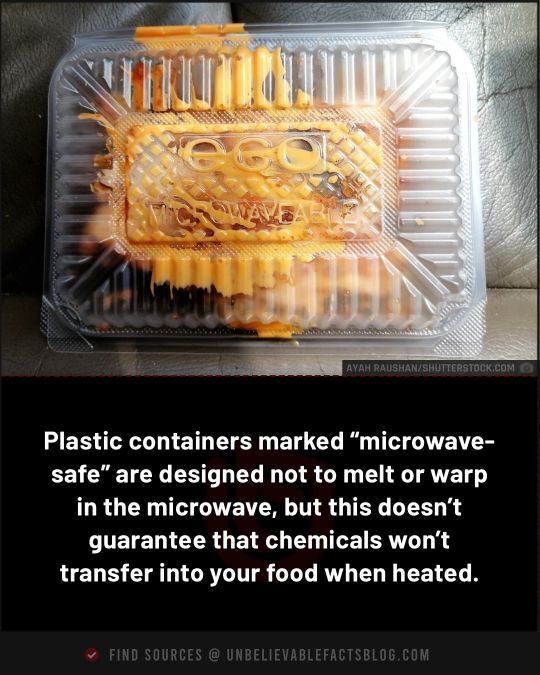#Plastics
Explore tagged Tumblr posts
Text
From the article:
The two students presented their groundbreaking project at the 2024 International Science and Engineering Fair (ISEF); a device that operates by using ultrasound waves to push microplastic particles to one side of a water flow, allowing clean water to pass through while trapping the contaminants. In their tests, the system successfully captured up to 94 per cent of microplastic particles, showing promise for real-world applications. "If we could refine this, maybe use more professional equipment, maybe go to a lab instead of testing from our home, we could really improve our device and get it ready for large-scale manufacturing," Justin told Business Insider. The duo envisioned their device being used in water treatment plants, directly modifying the quality of water for daily use. This application could significantly reduce the amount of microplastics that end up in water sources, protecting ecosystems and human health.
#microplastics#water filtration#plastics#plastic pollution#pollution#good news#environment#sustainability#hope#hopepunk#ecology#water conservation
2K notes
·
View notes
Text

Welcome to my Tuesday morning PSA about plastics!
So--I was walking along the Bolstadt beach approach sidewalk here in Long Beach, WA yesterday afternoon, and I started seeing these little orange pellets on the ground that looked a little bit like salmon roe (but probably weren't). So I picked one up, and it was most definitely rubber. I went around picking up every one I could find, and while I didn't keep exact count I probably amassed 50-60 of them. I took this picture before depositing them in the nearest trash can.
These are airsoft gun pellets, and you can buy them in big jars containing thousands of them. That means that someone who decided that the beach was a great place to shoot their airsoft guns could easily litter the place with countless little bits of plastic rubber in less than an hour. We already have a huge problem here with people leaving trash, including tiny bits of plastic, all over the beach (you should see the gigantic mess after 4th of July fireworks when thousands of people come in from out of town, blow things up, and then leave again without picking up after themselves.)
But these airsoft pellets have a particularly nasty side effect. You know how my first thought was "wow, those look kind of like salmon roe?" Well, we have a number of opportunistic omnivore birds like crows, ravens, and several species of gull that commonly scavenge on the beach, especially along the approaches because people often feed them there. If I can catch the resemblance of an orange airsoft pellet to a fish egg, then chances are there are wildlife that will assume they're edible.
Since birds don't chew their food, they probably won't notice that the taste or texture is wrong--it'll just go down the hatch. And since they can't digest the pellets, there's a good chance they might just build up in the bird's digestive system, especially if the bird eats a large number of them--say, fifty or sixty of them dropped on the ground along the same fifty foot stretch of sidewalk. The bird might die of starvation if there's not enough capacity for food in their stomach--or they might just die painfully of an impacted gut, and no way to get help for it. If the pellets end up washed into the ocean, you get the same issue with fish and other marine wildlife eating them, and then of course the pellets eventually breaking up into microplastic particles.
You can get biodegradable airsoft pellets; they appear to mainly be gray or white in color rather than bright screaming orange and green. But "biodegradable" doesn't mean "instantly dissolves the next time it rains." An Amazon listing for Aim Green biodegradable airsoft pellets advertise them as "Our biodegradable BBs are engineered to degrade only with long-term exposure to water and sun and will degrade 180 days after being used." That's half a year for them to be eaten by wildlife.
I don't know, y'all. That handful of carelessly dropped rubber pellets just encapsulates how much people don't factor in the rest of nature when making decisions, even on something that is purely for entertainment like an airsoft gun. We could have had a lot of the same technological advances we have today, but with much less environmental impact, if we had considered the long-term effects on both other people and other living beings, as well as our habitats. We could have found ways from the beginning to make these things in ways that benefited us but also mitigated any harm as much as possible. Instead we're now having to reverse-engineer things we've been using for decades, and sometimes--like the "biodegradable" airsoft pellets--they still have a significant negative impact.
But--at least there are people trying to do things better, thinking ahead instead of just on immediate profit. We're stuck in a heck of a mess here, figuratively and literally, and changing an entire system can't be done in a day. Maybe we can at least keep pushing for a cultural shift that emphasizes planning far into the future--if not the often-cited "seven generations ahead", then at least throughout the potential lifespan of a given product.
#plastics#microplastics#environment#environmentalism#conservation#nature#pollution#litter#birds#tw animal death#animal welfare#ecology#science#wildlife#animals#scicomm#pnw#airsoft#biodegradable#solarpunk
4K notes
·
View notes
Text
With microplastics now permeating our food and our bodies, researchers are keen to assess the potential damage these tiny fragments could be doing. A new study shows how plastics may lead to dangerous blood flow blockages in the brain. The study, led by a team from the Chinese Research Academy of Environmental Sciences in Beijing, involved tracking microplastics in blood vessels moving through mouse brains in real time – the first time microplastic movement has been tracked in this way.
Continue Reading.
643 notes
·
View notes
Text
The Greenwashing of Leather and Wool
There is a great deal of money being put into the greenwashing of animal products, particularly leather and wool, and the purposeful erasure of any alternatives except for plastic.
Animal agriculture industries have been accused of using the same tactics as big oil corporations to sow doubt and downplay their own role in the climate crisis. It is frustrating to see this kind of corporate propaganda repeated so gleefully by so-called leftists in progressive spaces.
Here are three articles I’ve written in an attempt to counter this misinformation. Hopefully you can save these to help you respond to anyone peddling these industry myths later, and then maybe we can talk about literally anything else…
503 notes
·
View notes
Text

"There's appeal in plastics--a special attraction that catches and holds the attention of the most discerning buyers." Advertising by Dow that heralds the coming age of plastic, detail. 1945.
Science History Institute
355 notes
·
View notes
Text
#vegan leather#plastic pollution#plastics#pleather#leather alternatives#leather#environmentalism#good news#science#environment#bacteria#microbiology#genetic engineering
855 notes
·
View notes
Photo

MURMURATIONS - Ephemeral Plastic Sculptures by ALAIN DELORME
955 notes
·
View notes
Text

Plastic containers marked “microwave-safe” are designed not to melt or warp in the microwave, but this doesn’t guarantee that chemicals won’t transfer into your food when heated.
82 notes
·
View notes
Text

This is me trying to spread the poly plastics message along
#they are in love#fight me#mean girls#incorrect mean girls#incorrect quotes#mean girls incorrect quotes#cady heron#mean girls musical#mean girls movie#regina george#gretchen wieners#karen shetty#plastics#the plastics#textpost meme
501 notes
·
View notes
Text
I think I posted this before, but I'll repost it again just in case I'm having a brain fart 🤔
#pay attention#educate yourselves#educate yourself#knowledge is power#reeducate yourself#reeducate yourselves#think about it#think for yourselves#think for yourself#do your homework#do some research#do your own research#ask yourself questions#question everything#plastics#poisonous#for your health#health tips#news#farmers almanac
289 notes
·
View notes
Text

Masonite Corp, 1971
#Marlite#ad#1971#plastic panels#remodel#vintage#advertisement#1970s#decor#panel#A frame house#plastics#faux wood paneling#70s design#advertising#creative
141 notes
·
View notes
Text

Plants over plastics: Researchers create biodegradable cellulose-based packaging
Researchers at Virginia Tech have found a way to make biodegradable packaging stronger while using less energy in the process. The research team from the College of Agriculture and Life Sciences and the College of Natural Resources and Environment developed a low-pressure treatment that improves plant-based packaging materials. This discovery could help companies move away from plastic without sacrificing strength or durability. "Petroleum-based plastics have long been the mainstay of packaging applications," said Haibo Huang, associate professor in the Department of Food Science and Technology. "However, their persistence in the environment has led to increased concerns about 'white pollution.' Biodegradable packaging materials are gaining interest as alternatives, but they often struggle to match the performance properties of petroleum-based plastic."
Read more.
#Materials Science#Science#Plastics#Plants#Polymers#Cellulose#Biodegradable#Packaging#Virginia Tech#Biomaterials
41 notes
·
View notes
Text
A review on the health effects of microplastics has some scientists suspecting the worst. The tiny synthetic particles that are found in our air, food, and water may be causing fertility issues, colon cancer, and poor lung function in humans, according to researchers at the University of California San Francisco (UCSF). Picking out some of the strongest evidence on microplastics published between 2018 and 2024, the team has identified several health risks to the digestive, reproductive, and respiratory systems of animals.
Continue Reading.
217 notes
·
View notes
Text
Scientists at the University of Hawaii have discovered a species of fungi around the island of O'ahu that is eating polyurethane plastic.
They are investigating whether the fungi could be an innovative way to recycle and remove plastic from nature. Initial research looks promising.
But plastic experts claim that biodegradable plastic solutions are just one approach to combat the plastic pollution crisis. The other? To reduce plastic production in the first place.
33 notes
·
View notes
Text

It’s time to break up with balloons
When not properly disposed of, balloons can harm sanctuary wildlife. Deflated balloons have been found along beaches, floating miles offshore, and even occupying the deepest depths of our ocean. Once in the marine environment, marine life can mistake balloons for food, and if ingested, can lead to loss of nutrition or cause suffocation, starvation, and death. String or ribbon is often attached to balloons and can cause entanglement and injury. Mylar balloons are often covered in metallic paint which chip off into small particles into the ocean.
(Photo: Russ Lewis. Image description: two deflated plastic mylar balloons on a beach.)
36 notes
·
View notes